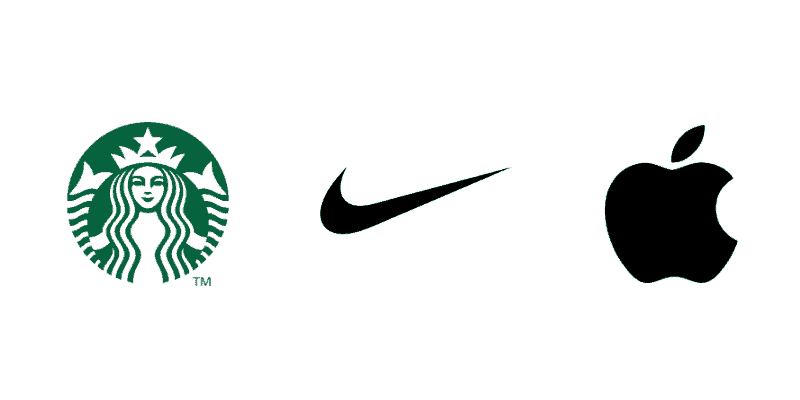
Do customers know, like, and trust your company? When they see your name or logo, do they associate it with a solution to one of their problems? If they do, that little piece of real estate you’ve claimed in the heads of buyers is what we call brand equity.
There’s a lot of value in that real estate. Being known for something specific is powerful. It makes marketing, sales, and word of mouth easy. Customers walk in your door already knowing who you are, what you do, and how you can help them.
It also makes your company more valuable. Larger competitors will jump at the chance to purchase a brand that has built a reputation with a specific customer base they want. In short, brand equity is the tangible return on the time, money, and resources you invest in rebranding.
Just make sure you know what you’re doing before you run off and start designing a new logo. Many companies hire a design firm, develop a pretty new logo, and consider their rebrand complete. Your logo is not your brand. Starting with your logo is like tossing an intricate blanket over a piece of shit on the floor. The blanket looks pretty but the shit still smells. Eventually, the turd will soak through the blanket and the money you spent on it is wasted.
A rebrand is much deeper than your logo alone. Here’s how you approach rebranding if you want a foundation for growth that will propel your company forward.
Step 1: Find your unique selling proposition
Why should buyers pick you over their other options? Every successful brand from fast food to cloud computing has a solid unique selling proposition at the heart of their business. It’s how you stand out from the crowd and win buyers. Here are a few questions you can use to narrow in on your USP.
- What are the customers I want trying to achieve?
- Who am I competing with to win these customers?
- What do these competitors do better than me?
- What do I do better than them?
Build your business around the problem you solve better than your competitors. Be the painkiller that makes that trouble disappear. Focusing on one area where you can be remarkably good is the down payment on the real estate you want in a buyer’s head.
Step 2: Clarify your brand message
It’s unlikely that you’ll win someone’s business the first time they’re exposed to your brand. You have to keep showing up with the same message to beat it into their melon. With repeated exposure to your USP, they’ll eventually remember the problem you solve and likely turn your way when that pain hits.
Your job is to make it stupid simple for customers to understand what you do, who you do it for, and why you’re the best option. You do this with a brand script and brand one-liner. This is a process we use for every client to ensure everyone in the company from the CEO to the receptionist is saying the same thing with the same language. Consistency leads to recognition. Recognition leads to reputation. Your reputation is your brand.
Step 3: Let your brand’s freak flag fly
It’s hard to put yourself out there and risk judgment, but that’s exactly what you want—to be judged. Brands have personalities just like people. In fact, that’s what a brand personality is, the personification of your brand. Decide what type of brand you want to be and let it rip.
Be polarizing.
Be funny.
Be sexy.
Be loud.
Be inspiring.
Be thoughtful and caring.
Be charitable.
Be wicked smart.
Just make sure you’re not easy to ignore. Your unicorn customer is surrounded by brands fighting for their attention. They’re bombarded on Instagram, LinkedIn, Facebook, TikTok, YouTube, in their email, on TV, walking down the aisle of the grocery store, and every other spot they turn. It’s unlikely that a buyer will be exposed to your message very often. Make the most out of every opportunity because you might not have another one.
Identify and declare your company’s personality. Give everyone in your organization a roadmap to follow. Knowing your personality will make crafting the appropriate visual elements much easier.
Step 4: Design your visual identity
We’re finally ready to get into the fun part, design. There’s no one right answer when it comes to designing a visual identity. What’s right for one company is wrong for another.
Think of your brand like a person. Your logo is your face, it’s how people associate the reputation with the person. Your face isn’t like anyone else’s so why should your logo—the face of your company—be like someone else’s?
The job of your visual identity is to express your brand’s unique selling proposition, message, and personality visually (hence the name visual identity). Your logo, icon, color system, photography style, and secondary design elements (together, the pieces that make up your visual identity) become the uniform of your brand. A strong visual identity consistently executed is a powerful growth driver. A few examples for you…

I don’t have to tell you the name of these companies. You see their icons and immediately recognize and associate some type of attributes to them. The Nike swoosh draws to mind athletic performance and the phrase “Just Do It” probably jumps to mind. The Starbucks icon equals coffee. And the apple of Apple translates to i-Everything and product design excellence.
Consistent execution of a visual identity helps you carve out that real estate in someone’s head. Your dream customers will seek you out and choose you regardless of price or convenience. They just need a clear visual cue to know they’re in the right spot.
You’re ready to rebrand
Let’s recap in case you weren’t paying attention. Here are the steps you need to take if you’re considering a rebrand…
- Find your unique selling proposition – Give people a good reason to pick you over their other options.
- Clarify your brand message – It should be stupid simple for everyone to understand the problem you solve, who you solve it for, and why you’re different.
- Let your brand’s freak flag fly – Decide what kind of brand you want to be and make your company impossible to ignore.
- Design your visual identity – Visually express your unique selling proposition, brand message, and personality consistently across every customer touchpoint.
Resist the temptation to jump straight into design. Take your time and approach your rebrand as an opportunity to improve the future of your company. Lay everything on the table and involve all of your key stakeholders, not just your marketing team. If done well, you’ll carve out real estate in your unicorn customer’s head and build a brand worth an elephant’s weight in gold.